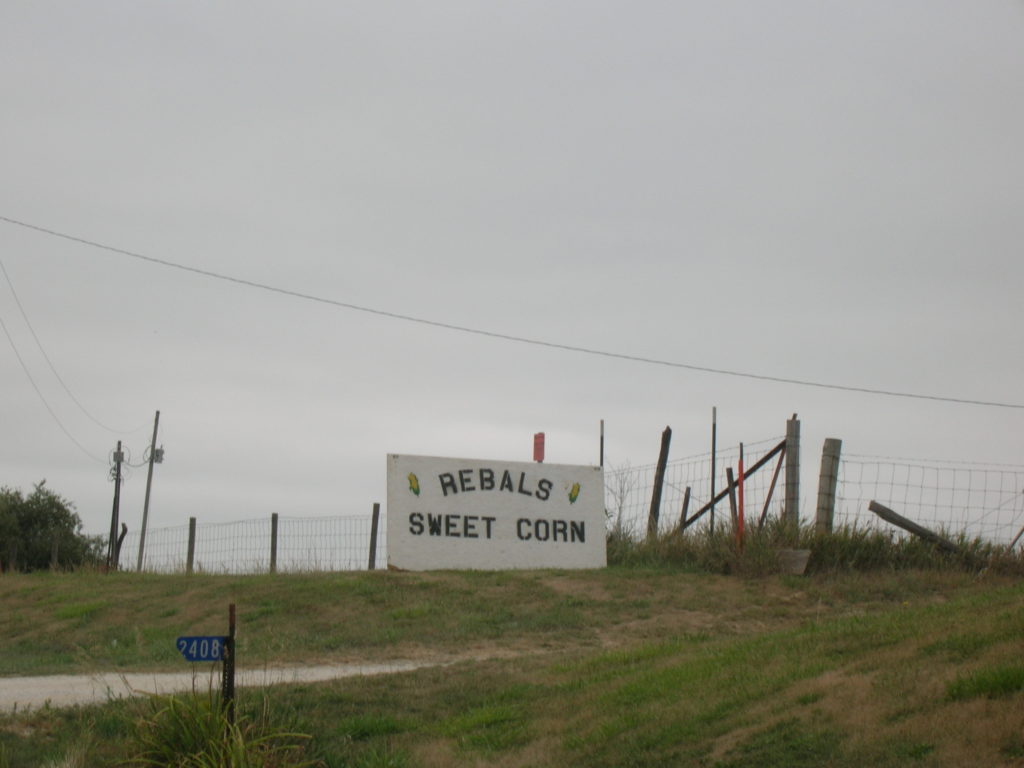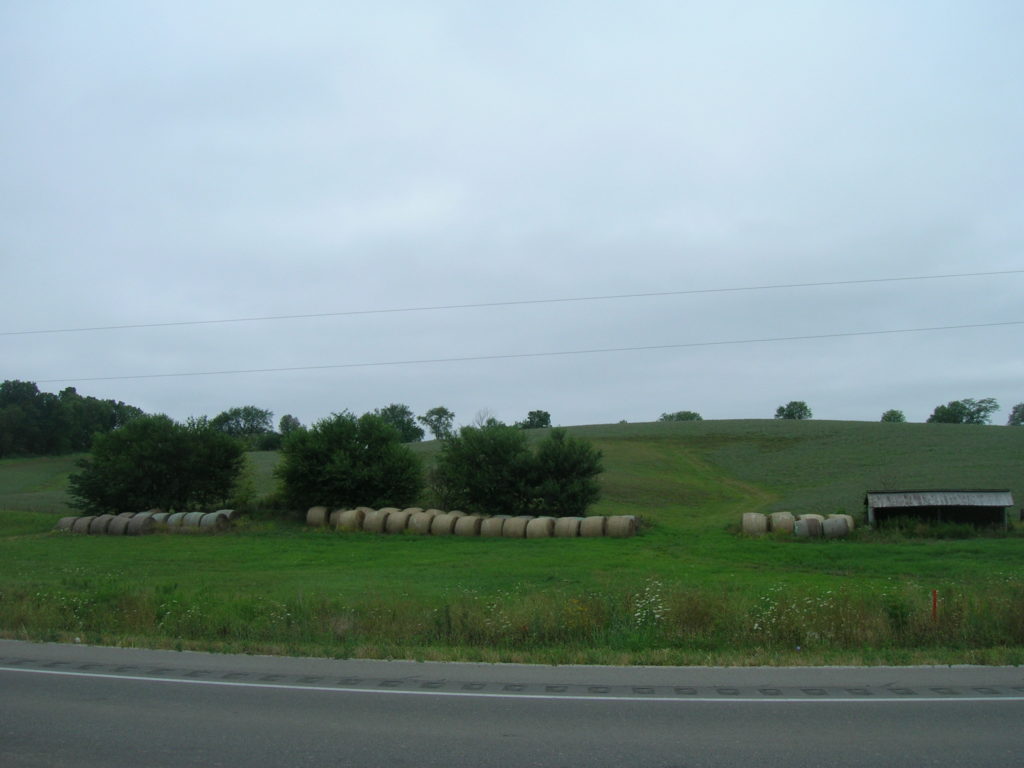It takes one thousand miles to drive from Washington, District of Columbia, to Iowa City, Iowa. Iowa City is approximately one hour west of the Mississippi River, and is considered part of Eastern Iowa. Eastern Iowa reflects the presence of the Central and East European settlers who arrived during the middle of the nineteenth century, responding to the offer of homestead farms, in a lot of ways. It also shows many of the paradoxical effects of late twentieth century cultural shifts.
The traditional industry that has dominated the Iowan economy and Iowan mythology is agriculture. Johnson County, the area where Iowa City is located, has a great number of family farms. Rybel’s Farm, right outside of Solon, Iowa, has some amazingly fresh early sweet corn. Local farmers’ markets abound with summer produce such as zucchini and tomatoes. Residents of the coastlines may not lack for fresh seafood, but in the summer they do suffer from a want of the flavor of corn fresh from the stalk or freshly picked heirloom tomatoes. Early summer harvest also marks the gentler lifestyle –and notice, I use the adjective gentler, not easier — of summer in the Midwest. This represents the first of the paradoxes of life in the Midwest. Summer may bring gentler weather, but that hides the higher level of labor that you find in expected and unexpected places.
You expect to find more intense labor in Iowa’s dominant industry – agriculture. Fresh corn and other vegetables and fruits may dominate the farmers’ markets, but these usually do not come to mean much to the local palate without the addition pork and corn fed beef, the dominant products from the state’s animal husbandry. Animal husbandry occupies a place second to corn within Iowa’s culinary mythology. The favored products from this realm are pork and corn fed – emphasis on the corn fed – beef. I have yet to see an Iowa pork farm, but I have to say that – and these, as they say, are considered “fighting words” in parts of the state – I tend to prefer the pork over the beef. But that derives from my Puerto Rican roots, most likely, since Puerto Rican culture favors pork over beef. The Iowa farm cycle culminates in the late summer with the Iowa State Fair, the largest agricultural state fair in the United States.
Food, and the way it is prepared, further represents the merger and evolution of East and Central European cuisines at the hands of the diasporic communities of the Midwest. In any of the German heritage restaurants in the Amanas Colonies – and please note the use of the term “colonies” for this region – the term “salad” refers to any combination of steamed, boiled or shredded vegetables slathered in mayonnaise sauce. Think of any of the endless permutations of potato salad or cole slaw type presentations so familiar to those of us who have studied abroad in Slavic countries. The epitome of the culinary celebration of this Eastern European past is represented in Saint Ludmila’s Kolach Festival, in June. Saint Ludmila’s Church in Cedar Rapids[i] hosts this celebration of the culinary legacy of the city’s Czech settlers.
Signs of the presence of increasingly global monocultures have started to manifest themselves within Iowa’s strong emphasis on local agriculture and local self-sufficiency. A drive among the corn fields in Iowa start to show the signs of the increasing concentration of large agricultural conglomerates, as the fields are marked by the signs of large agricultural seed producers – the kind that do not allow the historically thrifty Iowa farmers to keep any leftover corn seed for heirloom harvesting the next year.
Even the local art scene shows the increasing influence of global forces. At first glance, it seems as if each and every business in downtown Iowa City belongs to a local business person. Among some businesses of long standing are Herteen and Stocker jewelers and Pagliai’s PIzza. This does not mean that global connections do not affect the popularity of local establishments. The particular favorite of people in the field of cultural studies is Prairie Lights, the local independent bookstore that includes a wonderful coffee shop on the third floor, as well as regular readings by authors from the University of Iowa summer writers’ workshops. These readings are actually a much bigger deal than anyone may expect from a city in the middle of Iowa. UNESCO has given Iowa City the title of City of Literature. The title is due, in great part, to the presence of the University of Iowa. The University houses a Writers’ Workshop and an International Writing Program that attracts an amazing amount of literary talent to the city. This has turned University of Iowa into a powerhouse within the writing community, in part because of the ability to focus on the writing rather than on a whole gaggle of museums or events to attend each day.
For language and literature types, summer is the highlight of the year in Iowa City. The warm weather, the manageable dimensions of the city, and the breathtaking expanses of the rolling corn and soybean fields offer a writer a welcoming atmosphere to meditate and to create. This writer’s equivalent of the Super Bowl lastas through what I find the most pleasant part of the year in Iowa.

One of the favorite summer establishments right outside Iowa City — Rebal’s fresh picked sweet corn!
[i] http://www.stludmila.org/kolach/

